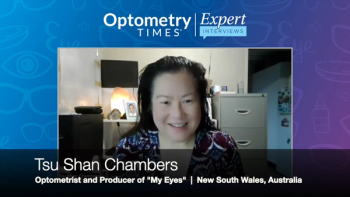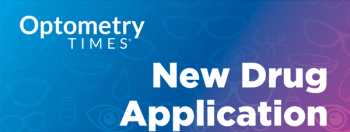
AOA evidence-based clinical practice guideline aims to improve treatment for patients with POAG
The guideline, titled "Care of the Patient with Primary Open-Angle Glaucoma," was developed by the AOA Evidence-based Optometry Guideline Development Group.
At the tail end of 2024, the American Optometric Association (AOA) published Care of the Patient with Primary Open-Angle Glaucoma, an evidence based clinical practice guideline.1 The guideline’s first edition is “designed to elevate health care quality by providing doctor of optometry a platform to build quality clinical care to ensure patients are diagnosed and treated based on scientific research,” according to a news release.
“Constantly improving the art of patient care by leading with evidence-based modalities of care is why these guidelines are so important to the profession,” said AOA President Steven T. Reed, OD, in the release. “As the primary providers of eye health and vision care, we are at the frontlines of glaucoma diagnosis, management and treatment and this first edition provides modern recommendations that help advance the care doctors of optometry are delivering to patients.”
The guideline provides current scientific evidence, research, and analysis with recommendations for appropriate steps in the diagnosis, management, and treatment of adult patients with primary open-angle glaucoma (POAG). The guideline was previously open for public comment between March and April 2024 and was developed by the AOA Evidence-based Optometry Guideline Development Group.1
“The Care of the Patient with Primary Open-Angle Glaucoma is the product of several years of work by the talented volunteers on the AOA Evidence Based Optometry Committee, multidisciplinary stakeholders, writers, and AOA staff who worked to assemble this guideline,” said Carl Urbanski, OD, in the release. “The information was developed from the review of over 1200 articles, multiple drafts and systematic analysis. This resource should be reviewed and placed into action by all our members to refine the clinical care process we provide to our patients, from those at risk of glaucoma to patients in the continuum of care based on the highest quality evidence and current knowledge.”
As for the guideline’s evidence-based action statements, recommendations for care that received A grades included the use of prostaglandin analogs as initial therapy with patients that have ocular hypertension (OH) or POAG, selective laser trabeculoplasty to be considered as an initial/alternative or additive therapy to medication for achieving intraocular pressure for OH or POAG patients, and early medical treatment should be considered for patients with OH who are at moderate or high risk of developing POAG.2 This Grade A designation makes these practices strongly recommended by the AOA. Each action statement also included a fleshing out of evidence found in support of said statement, and included other assessments including potential benefits and risks/harms, potential costs, and value judgements, among others.2
The full guideline can be found
References:
New AOA clinical guideline puts focus on elevating care of glaucoma patients. News release. American Optometric Association. November 5, 2024. Accessed January 15, 2025.
https://www.aoa.org/news/clinical-eye-care/diseases-and-conditions/new-aoa-clinical-guideline-puts-focus-on-elevating-care-of-glaucoma-patients?sso=y American Optometric Association. Evidence-based clinical practice guideline: care of the patient with primary open-angle glaucoma: first edition. Accessed January 15, 2025.
https://www.aoa.org/a/19461
Newsletter
Want more insights like this? Subscribe to Optometry Times and get clinical pearls and practice tips delivered straight to your inbox.



















































.png)


